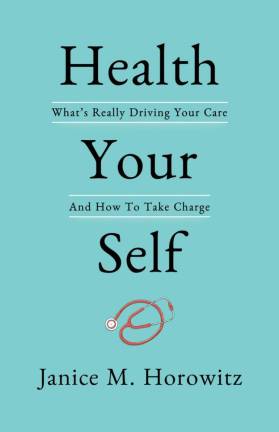Down the Medical Rabbit Hole
A health writer’s head bang became part of a new book about the hidden forces behind health care


It’s hard to believe that laughing could send me deep into a medical maze. But so it did about a year ago one night in March. I was having dinner with a group of journalist friends at an Italian restaurant in New York City. Someone said something funny, and I threw my head back in laughter. Smack! Dead center on the back of my head, I hit a metal rod running along the top of the red banquette where I was sitting.
What ensued next may remind you of a maddening medical experience you’ve been through when all of a sudden, some body part or ailment you never thought about suddenly becomes all you think about. That night at the restaurant, the flesh-to-metal smack was so loud that friend after friend at the long dinner table turned to ask if I was all right. In boxing, hits to the back of the head, called rabbit punches, are strictly forbidden since they can cause severe brain damage, even death. I knew what had happened was not that extreme, but still, I was scared.
Nonetheless, when my friends asked if I was okay, I replied with classic denial: Sure, I’m fine. I carried on. And so, with a pasted “I’m okay” grin on my face, off I went with the crowd to another watering hole to keep the night going a little longer. It was there that I began to feel strange. I was nauseated, lightheaded, and suddenly overcome with an urgent sense that I had to leave. When I got home, I told my husband I thought something bad had happened to my brain. Then I lay down on the floor and fell asleep.
But not very well because the pain in my head was unbearable. Maybe my head was bleeding or swelling, two realistic concerns with head bangs — and ones that send injured people into emergency surgery. But I kept telling myself that all I did was hit my head by laughing. I wasn’t in a car accident, I didn’t fall from a height, so it couldn’t be that serious. Still, I could hear rattling in my ears —something I later found out is typical for what I had: a serious concussion. I was worried, but I stuck with the pain and concern all night, falling in and out of sleep.
The next day was a Sunday. By this point, most people would have called their doctor, who on a weekend undoubtedly would have sent them to the emergency room for a CT scan. I knew if I called mine, that’s what she would advise. I didn’t call and chose instead to stick it out. CT scans deliver up to four hundred or more X-rays to your head. MRIs, on the other hand, deliver zero. That’s why, maybe foolishly, I waited until Monday for an MRI.
Dark Room
The results were what I had hoped: there was no bleed or torn blood vessel. Which meant, while I had a concussion, I did not have an emergency.
What occurred after that was months and months of an odd, small existence where I yearned for the most mundane parts of life. Washing dishes, paying bills, cooking, all seemed elusive. I would walk my daughter to school, but so dizzy that I had to sit on a stoop or lean against a tree. I would come home and sleep the mornings away, in such a deep state that even an alarm couldn’t wake me. I would try to go out, but only to a nearby shoe or drug store because they have chairs where I knew I could rest. The only way back home was a cab.
Meantime, I went down the medical rabbit hole, visiting doctor after doctor, each of whom had contradictory advice. Early on, two doctors said to stay in a dark room and avoid any stimulation. It made me worse. Another said that I should not do any thinking without resting for 20 minutes beforehand, then do my thinking, and then rest again. Another said that the problem was actually my neck and I should avoid turning my head. And yet another told me to turn my head as much as possible since this was a way to treat my wobbly balance.
Finally, I worked up the stamina to look around for credible, peer-reviewed publications on the subject. I found a medical study that doctors at Stanford University embraced as part of their concussion protocol. It showed that exercising by riding a stationary bike for 20 minutes a day could help pump life back into my de-conditioned brain. I was terrified to try, but did nonetheless. When I saw that I didn’t get dizzy or fall off, I kept at it - and checked with a New York neurologist to make sure it was okay for me to do. Within a week, I started to feel better. And after a month, I began to feel like myself. A couple of weeks later, I began again to write a book - and this story became a chapter.
Janice M. Horowitz is the author of “Health Your Self: What’s Really Driving Your Care and How to Take Charge.” Backed by twenty years of covering health for Time Magazine, Horowitz writes about forces that influence - and compromise - your health care: referrals that lead to bonuses for doctors, or handing out unnecessary antibiotics at urgent care to get a five-star rating on a patient survey. Her book is available on Amazon, on Barnes & Noble and through Simon and Shuster.